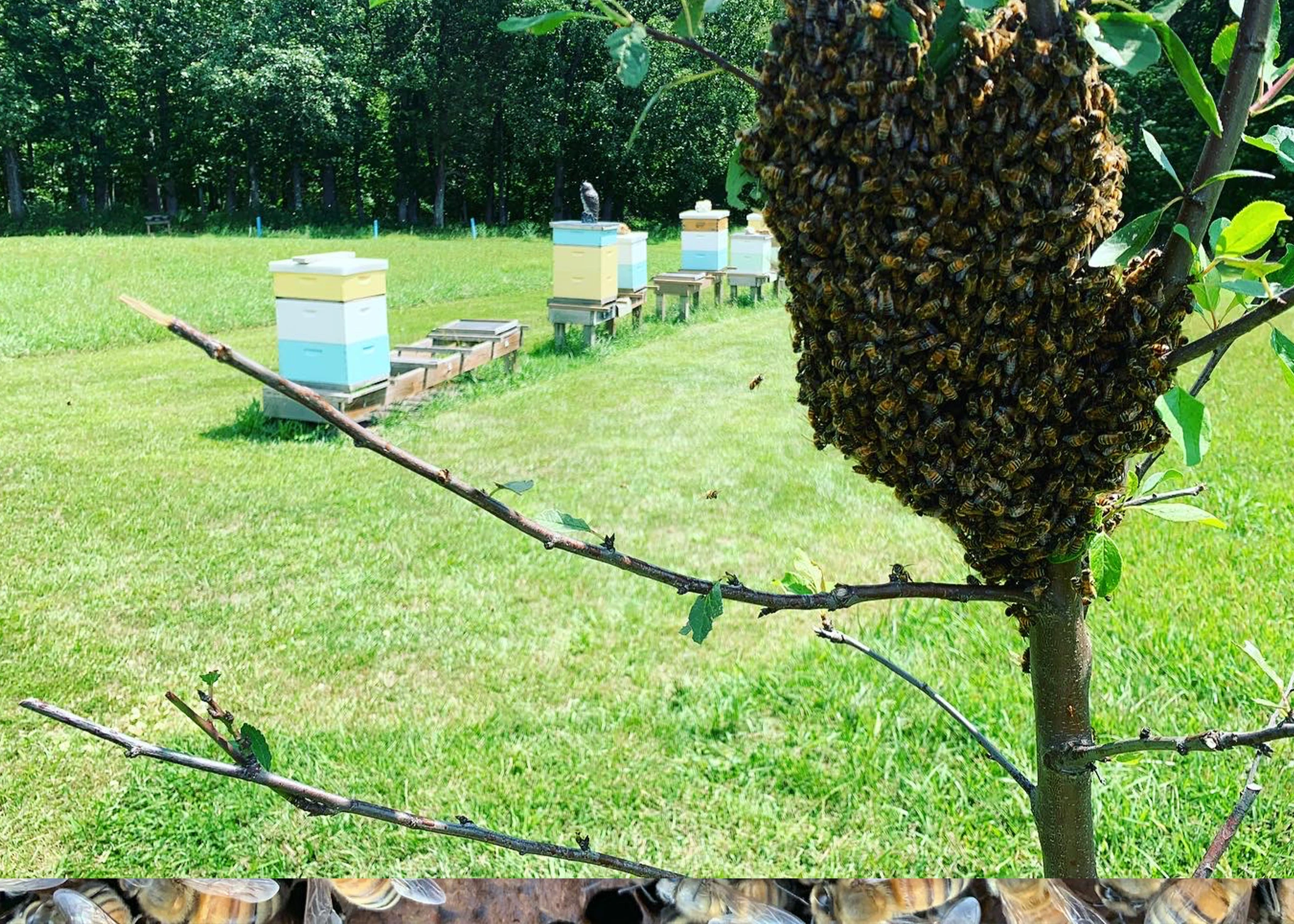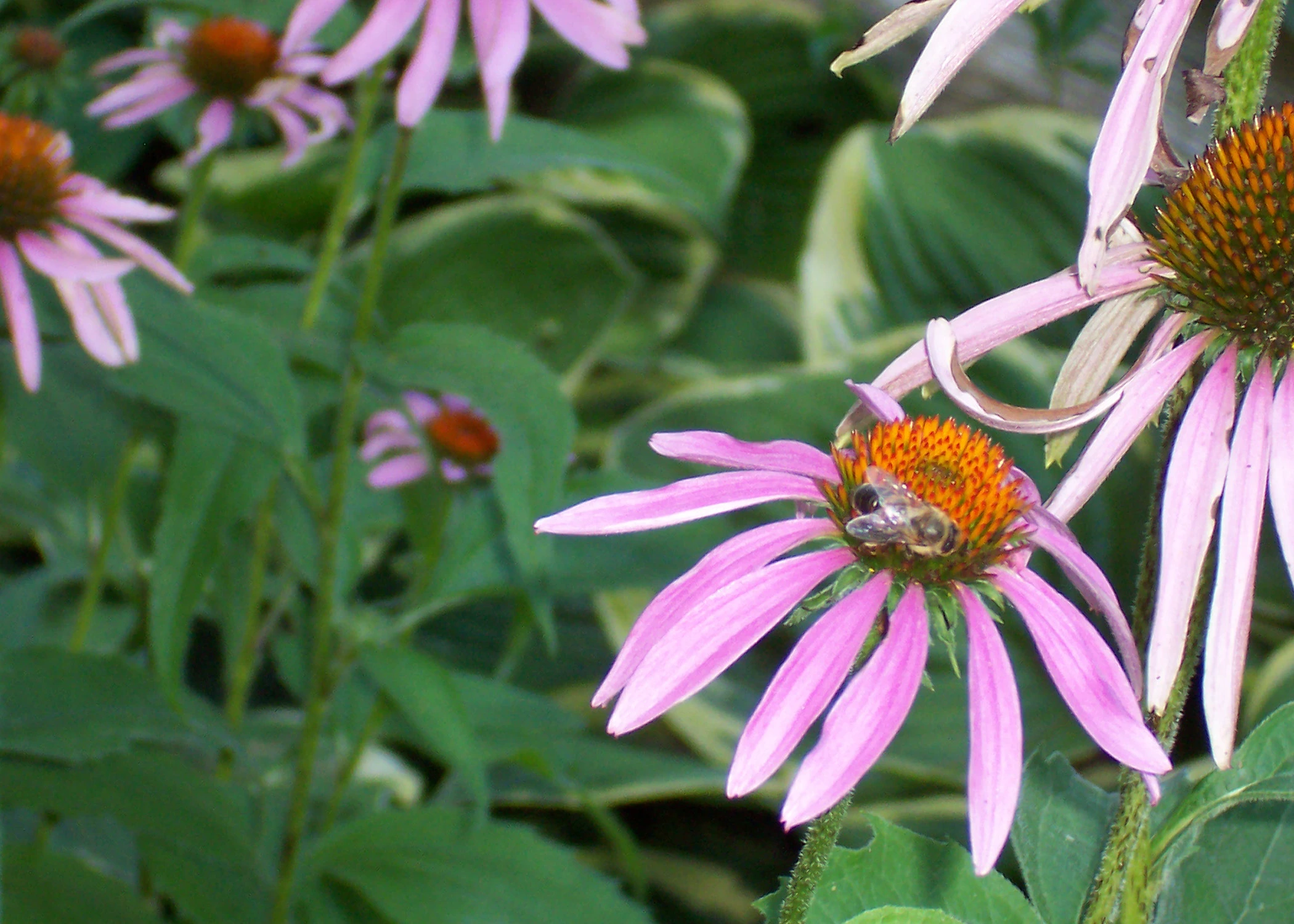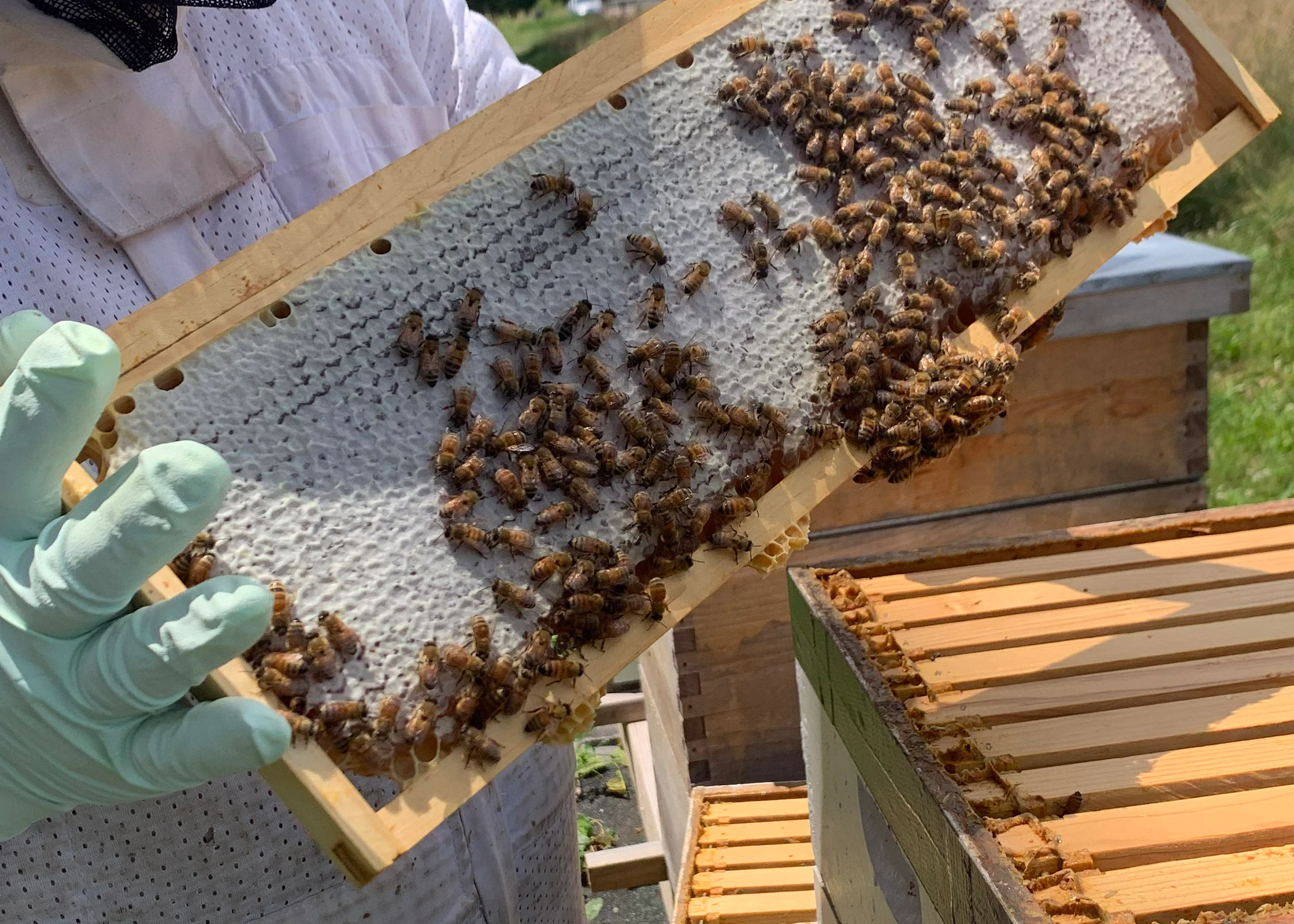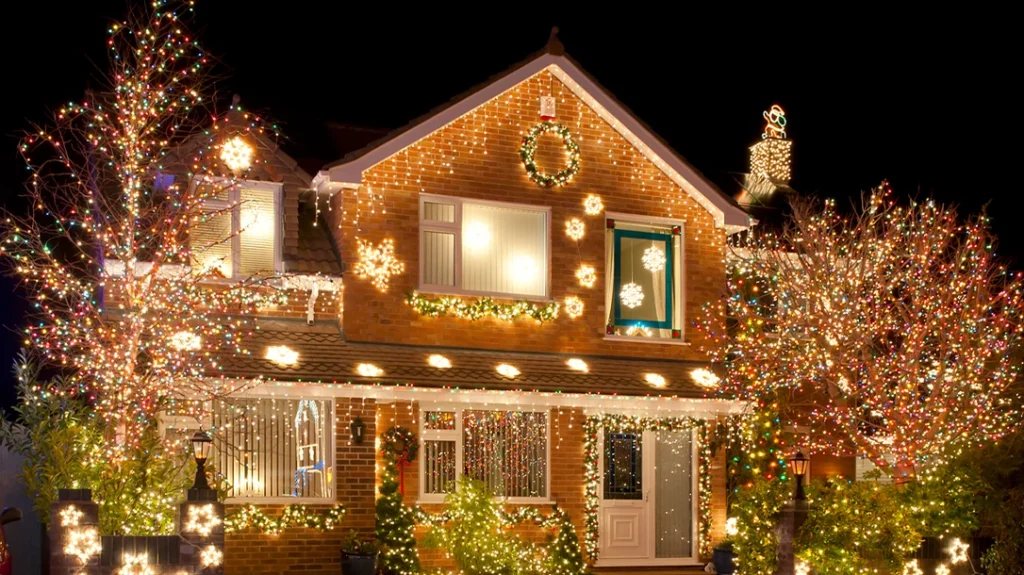It’s no secret that having a hobby is tied to happiness. A 2023 study published by Nature Medicine suggests having one is even good for your health. When compared with people who didn’t have hobbies, those who did reported better health, more happiness, fewer symptoms of depression, and higher life satisfaction. With that in mind, why not give beekeeping a try?

Beekeeping as a Personal Hobby
Over the years, I’ve taken up various hobbies as I’ve moved through different seasons of my life – figure skating, swing dancing, scrapbooking, and watercolor painting. Hobbies provide creative outlets and respite from the repetitive cycle of our lives. When my husband, Steve, and I sold our city home in favor of a ranch with a bit of land for growing our own food, we thought we’d take up beekeeping as a hobby. It sounded like such a fun idea! I love honey and growing flowers, and I thought keeping bees would only improve my gardens. Steve loves being outdoors and learning new skills.
Advertisement — Continue Reading Below
It sounded like a perfect activity for us to do together. But after we attended a local beekeeping club meeting, my romantic notions were a bit dashed. I realized YouTubers and the Internet at large may have painted a rosier picture than reality.
Do Your Research
“If you ask 10 different beekeepers a question, you’ll likely receive 10 different answers,” saidLinda Els, treasurer for Jefferson County Beekeepers Association. “People tell us they read all these beekeeping books, but are still having trouble with their hives. We tell them bees don’t read the books. Beekeeping is an expensive hobby, and there are no guarantees the bees won’t just fly away.”
I contacted Scott Moser, the president of Jefferson County Beekeepers Association, for a deeper understanding of the nuances of beekeeping. When Moser began his beekeeping endeavor 30 years ago, there were only a handful of local associations across the state, and it wasn’t easy to find a beekeeping mentor.
Advertisement — Continue Reading Below
At this time, much of his information came from books or clubs that offered beginning classes. Until about 10 years ago, he maintained 125 colonies spread across St. Louis, Franklin, and Jefferson Counties. Still, rising costs of equipment and beescoupled with increased winter losses, pests, and diseases forced him to cut back. Today, Moser manages 15 hives.

Beekeeping Basics
According to Moser, one of the biggest mistakes rookie beekeepers make is not doing their homework.
Advertisement — Continue Reading Below
“Keeping bees is not as easy or glamorous as many people let on, and it’s not inexpensive either,” said Moser.
He points out how many people get lured into beekeeping by watching celebrity YouTubers. Moser advises a full year or two of preparation before even thinking about starting a hive. This means reading several books and not just relying on the Internet for your information. In addition to reading, Moser suggests enrolling in beginning beekeeping classes and joining a local beekeeping group. By being part of a local group, you will have access to keepers with decades of experience in the area in which you live and plan to keep bees.
Small Differences
“It is important to remember that beekeeping is local. A hundred miles can make a huge difference in how bees are kept. Beekeeping in the St. Louis area is not the same as keeping bees in the Kansas City area, and vastly different from how bees are managed in the Bootheel of Missouri,” shared Moser.
Advertisement — Continue Reading Below
In addition, Moser suggests seeking out a seasoned keeper who will allow you to shadow them throughout the year, with an opportunity to work with their hives. This will help you understand what beekeeping entails from one season to the next. If, after doing all of these things, you are still determined to keep bees, Moser suggests starting with two hives. This allows you to compare hives, swap resources if necessary, and get one of the two hives to survive through to the following spring.

The Cost of Beekeeping
When Moser started, the cost for all equipment, woodenware, tools, and bees was about $100. Today’s new keepers can expect to spend $1,000 or more to get started. “In all honesty, a person can go to a local beekeeper and buy a lot of honey for that amount of money and not have the headaches and hassles of trying to maintain a colony of bees. Unfortunately, I think the popularity and novelty of keeping bees has driven the cost up so drastically in the past five years. I have seen a lot of price gouging and plenty of overseas scammers pop up since beekeeping became the ‘in’ thing to do,” shared Moser.
Advertisement — Continue Reading Below
In addition to start-up costs, the biggest year-to-year expense involves purchasing new bees to replenish those that die out each year. The cost to replace bees in a single hive that dies out in the winter is $200-$225. This price goes up about 10% each year. When it comes to which brand of beekeeping suit or gloves he prefers, Moser only uses a veil and occasionally gloves.
“Over the years, I have found bees can sting through pretty much any suit or gloves that are out there,” said Moser.
There are numerous options to choose from when purchasing beekeeping equipment, ranging from local supply companies to “farm and home” stores to Amazon. Moser cautions purchasing items through Amazon, as he believes many of their offerings are low quality and mass-produced in China.
Advertisement — Continue Reading Below
The Time Investment
Beekeeping requires a lot of time and patience. It typically takes a new beekeeper about four to five years before they are consistently harvesting honey.
“A rookie beekeeper mistake is getting in your colonies’ way too often. It takes three days for a colony to get back to order after it has been inspected,” shared Moser.
Typically, a new keeper should expect to spend 15-30 minutes inspecting a single hive every two weeks in the spring, summer, and fall.
Advertisement — Continue Reading Below

Reaping Rewards
In Missouri, the average amount of honey produced per colony is 40 pounds. According to Moser, weather tends to be the most significant factor in determining production. Bees won’t fly enough to collect nectar if it frosts at the wrong time or temperatures are too cool. Rain can prevent bees from foraging, or it washes the nectar out of the flower. It takes two days for flowers to begin producing nectar after a rain. And, plants won’t produce much nectar or any at all when conditions are dry.
To a lesser extent, too many colonies in any given area will reduce the amount of honey produced. The more colonies, the harder the flowers are hit in that area. In addition, the number of pests and diseases beekeepers must contend with goes up each year. Many of them weaken the health of the entire colony, such as the Varroa destructor mite. It acts like a tick.
Advertisement — Continue Reading Below
Not only does it weaken the bee, but it also transmits viruses within the colony. Small hive beetles destroy the comb. There are also several bacterial infections, such as European Foulbrood and American Foulbrood. Four-legged pests, such as skunks and opossums, also pose a threat. In Missouri, as the bear population expands, they too can become a problem for the beekeeper.

Hive Personality
Another factor that affects why one beekeeper’s experience may differ from another’s experience is hive “personality”. Some hives are calmer while others are more aggressive. “Hive personality has a lot to do with the genetics of the queen. Some evidence suggests that queens coming from areas where “Africanized” bees are found can be a bit more aggressive. However, weather conditions, time of day, and pests can also affect the temperament of the colony,” said Moser.


















